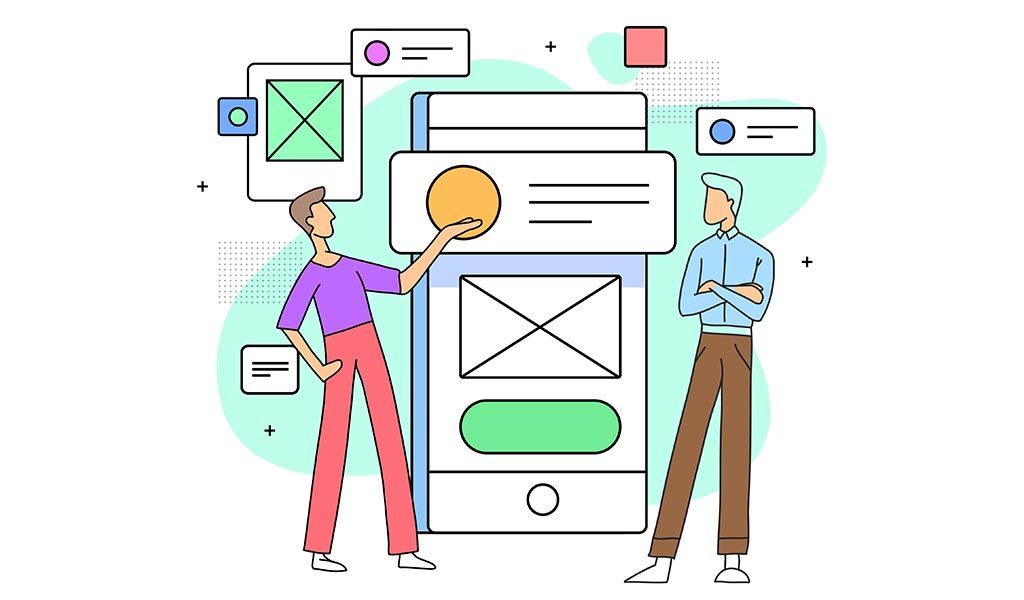
It might seem like a simple answer, but actually, the choice of whether to provide a free demonstration or a free trial could not only make a difference to the customer experience but can also impact sales of the product.
Here we’re going to explore both free trials and demonstrations and outline the pros and cons for each, along with the benefits and most favored outcomes. For both the software provider and the customer
By the end of this article, you’ll know whether to offer a free trial or a demonstration for your product, as well as whether to opt for a free trial or a demonstration from a customer’s perspective.
First, let’s give you the quick answer so you can get a measure of it, then we’ll dive into the whys and wherefores of what suits who best.
Is a free trial or a demonstration best? Free Trials and demonstrations both have advantages and disadvantages. To decide which suits you best lies in the complexity and breadth of the product. More complex setups and optimization require more hand-holding, simple software products require less guidance to get the most out of them.
It sounds simple, but providing value for both parties is the key here. And there are dangers. We strive to provide the best value for our customers here at commbox.io, so this is something we’ve also had to wrestle with in the past, so we’re going to pour our experience into this assessment.
First, let’s explore the main differences between the two
The difference between a free trial and demo?
Here are the two main differences between a free trial or a demonstration of a product. For the most part we’re going to focus on a software-related product as these two areas mainly apply to software products.
Free trial
The form of software can be downloaded as a free trial version. It’s given a period of time in which it will function – either fully or in part. Then normally, then you will be asked to purchase the license or make a payment to obtain the full version.
Free trials will often provide just some of the basic tools but will then require a purchase or subscription signup to use the whole product – which often includes the best or advanced features you want or need.
But, this is also an option you can take …if your software lends itself to this category. Or if as a user, you know the software will provide a good experience of its use before purchasing.
Pros and cons of a free trial
✔ You can try before you buy
✔ You have access to free basic use software
✔ You can assess the software in your own time
✔ Ideal for a simple “plug and play” type software
✔ Ideal if you have a basic understanding of the product
✔ Allows a mass install marketed to a wider audience
🗙 You do not have access to the full version to test
🗙 Opting out is left to self-assessment
🗙 No, or limited support to get the most out of the product
🗙 A potential steep learning curve
🗙 Misunderstanding the product
Demonstration
A demonstration usually involves having someone who is knowledgeable and experienced in the use of the software to take you through how the software os best used.
This is often via an online demonstration, webinar, or even a virtual video tour. You can then get first hand “show and tell” training, along with insights on best practices and optimizing the product for your own use.
Pros and cons of a demonstration
✔ Get an all-round view of the product benefits
✔ Features are explained
✔ Know how the software applies to your needs
✔ Option to ask questions
✔ Insights on optimizing it for your use
✔ A view of the full product in use
✔ Eases the learning curve
✔ Customer feels special
🗙 Can require staff time to provide a demonstration
🗙 Does not suit simple software
🗙 Potential software issues during demonstration
🗙 Misunderstanding the product
So when it comes to your product, you can use the pros and cons to help assess how best to “sell it”. Which brings us to the decision.

Should you offer a free trial or a demonstration of your product?
To help you, we’re going to outline the best way to reach the decision based on criteria. To make it simple, and clearer, we can break them down into specific criteria based mainly on size and complexity. See where your software would fit into the following categories – then you’ll have your answer.
Simple tools
Typically this might be a small app downloaded to perform a specific task. Maybe a system driver or utility, or perhaps a simple chrome extension that enables a specific feature. Generally for single machine/single-user applications.
Free trial or demonstration?
Answer: Free Trial
For this, and often due to the low cost of the products, along with simple setup and use, a Free Trial would be more than sufficient. It enables you to provide simple low-cost software on a mass scale. Enough users will like it enough to purchase the full version.
Integrated apps
This level would include expanded or integrated tools such as Antivirus Software, Productivity software such as office, and even games.
Free trial or demonstration?
Answer: Free Trial
This could be either, but for the most part, people downloading this type of software have experience and know what to expect. It’s often mainstream type applications, or apps you would only download if you had a working knowledge of them already.
Specialist software
Here you would place software products that usually require specialist training to use for single users or small teams and also where some knowledge of setup might be required. Typical software in this category might include Adobe suite of products, Video editing products, and small accounts packages
Free trial or demonstration?
Answer: Free Trial or Demonstration
Yes, this could be both, for those who do not know how to set up the software, or where some basic training in basic use and/or best practices are required, then a demonstration would help bridge that knowledge gap. Often those downloading it have the required knowledge already or can get training independently.
System-Wide software
In this category, you would typically find complex company-wide or team use type software. They often require help and advice on the best options to use for your needs. Examples would include Online company Applications, Account Management packages, CRM’s, and network management software.
Free trial or demonstration?
Answer: Demonstration
Often this type of software is aimed at organizations, like our very own Commbox, it can be simple and easy to use, but requires some setup, and is often large scale and complex spanning many departments or team members.
Also, as with our Commbox, the product is modular in design, so assessing your needs can require assistance. It’s also expandable, so having help in understanding a route map of integration into a system is often where specialist knowledge and experience come into play. We have that specialist knowledge in our marketplace.
Software support
The amount of support a software application requires is also a factor. So couple this with the type of, or the amount of support your software application needs and it can then start to become even more complex. Or perhaps not complex, but just needs updating, further integration, and maintenance, etc.
These factors also affect price, and the price usually plays a role in whether it comes with a demonstration or free trial too. So how much support does your software need? Once you know this you can better make a decision as to whether to offer a free trial or a demonstration.
But do you have to offer anything at all?

Why offer a free trial or demonstration at all?
Software products are harder to sell off the page. It’s a bit like the car market, it’s only when you test drive a car that you get a real sense of if it fits what you need it to do and meets your expectations.
If you offer neither a free trial nor a demonstration, the risk is that the customer is more likely to walk away. Or potentially, try your competitor’s product for free. So where it’s feasible then yes, you should offer one or the other.
Both free trials and demonstrations offer you the opportunity to show off your product and let it do the talking for you.
One important benefit of demonstrations is it allows you to control the sales process, at the end, you’re better able to handle objections, clarify uses and software features where needed.
Perceived value comes into play, the customer will get what they see, and the phrase “They don’t know what they don’t know” springs to mind – and will apply to lots of software types. If they cannot try it, they will not know or understand its value.
There are risks associated with both free trials and demonstrations, let’s take a quick overview of what those are.
Risks of offering a free trial
Offering a free trial means you have limited sales ability when it comes to helping the user decide whether or not to adopt the full version of the software. Aside from some on-screen prompts you will be taking yourself out of the sale process.
You also don’t know if they used the software to its full extent. Are they trained? Did they understand it? Did it match what they were looking for?
Which brings us to feedback, it’s harder to obtain product feedback from free trials. You can ask for it, but fewer customers will be inclined to provide feedback. All you have to go on are simply the conversion ratios of purchase.
According to Neil Patel, offering a free trial makes no sense for many companies. If your product takes time to enhance your business, then simply offer a free trial is not going to provide the track record results that might be required.
Risks of offering a demonstration
Inherently, this is where you are walking through the software with the customer. This does have it drawbacks.
Not being able to directly get involved with software means there’s less of a “bond” between the software and the customer. They’re looking through a glass window at the product being used. Getting your hands on a product and using it yourself does have it’s benefits.
Demonstrations often have to cover a lot in a short space of time. Spending too long on a demonstration can cause customer attention to wander. You need to keep it short and to the point, but with enough to keep them interested.
Let’s look at how and why we decided to offer free demonstrations.
The Commbox demonstration
We offer free demonstrations of our Commbox product for our customers. It suits us perfectly.
As our product is integrated into medium and large organizations, it offers us the opportunity to demonstrate commbox from a company-wide perspective, rather than just for a single user.
It allows us to firstly demonstrate how Commbox benefits each user, but also we can provide a macro-level overview, which enables us to demonstrate how modules work together for different departments across a company. If you’re looking to put in place an automated, efficient and cost-saving customer interaction system, then arrange your free commbox demonstration now.
Final thoughts
Offering either is largely down to the type of software or indeed the type of product that you’re selling. Ultimately, providing free trials is a great way to get software signups on simpler products – en masse. Whereas demonstrations allow you to show large scale or complex applications, demonstrations are usually lower volume but yield greater sales.